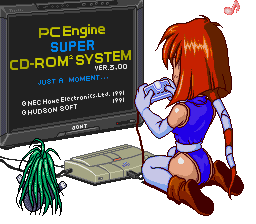Quote from: gilbert on 01/02/2019, 03:25 AMOr do you mean that the English fonts in the system cards suck (regardless of region), but it's only less annoying when most of the text are in Japanese?I should have been more clear with the scope of my change - I only changed:
I think for whatever reasons, the English font in Japanese system card 3.0 is a bit different from those in 1.x as well (don't know when it was changed, either from v1 -> v2, or v2 -> v3), as the screenshots in game manuals of non-super CD games usually show letters that are a bit different from playing the game with system 3.0.
Edit: If Wikipedia is to be trusted, the 12x12 and 16x16 fonts were changed in Super System Card(i.e. since v3) to add more symbols and enhance readibility. Maybe for unknown reasons the western system card v3 still uses the old fonts?
1) Upper and lower-case letters from A-Z
2) Numbers from 0-9
3) The '?' and '!' punctuation marks
...And the American cards contain all the same font information as their corresponding Japanese cards (to the best of my knowledge).
System Card 3.0 probably does have more symbols, but that wasn't the focus of my studies.
If I can get the ZIP file uploaded to the board, there is a utility in there to browse the characters sets.
I just checked what you mentioned about the updated font, and it appears that they did make a couple of changes:
System Card 1.0 -> 2.0:
- replace the 12x12 numeric characters with a slightly larger, less-bold font (but this doesn't exactly match the rest of the Western characters anymore)
System Card 2.x -> 3.0
- replace at least the 12x12 uppercase alphabetic characters with new ones.
It seems that the old ones might have been too 'blocky', so they may have thought that they were making them prettier - but the replacements don't use the same baseline, so capitals sit lower than lowercase characters (which is jarring). This would have been obvious if they had written a sentence in English, so I can't accept that it enhances readability.






